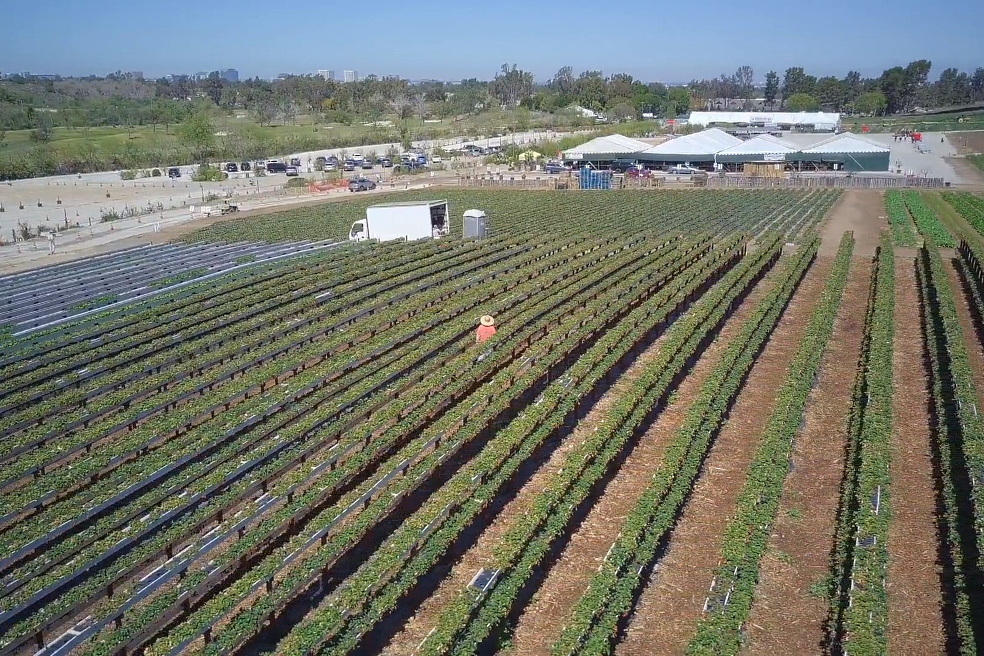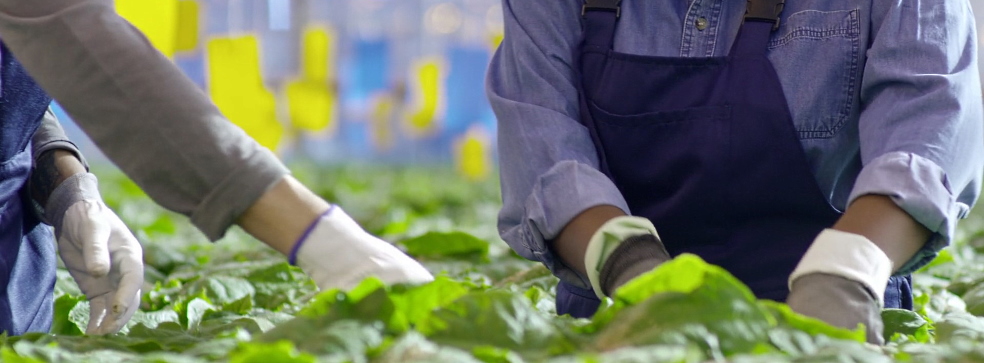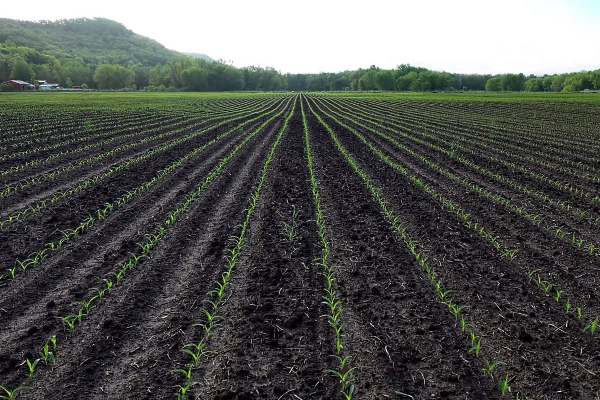To consider an application for financing, fill out the form and send it to us by e-mail along with the project brief, or contact our experts
India currently needs innovation and affordable agricultural finance, including farm loans.
Agricultural finance in India is experiencing steady growth and the contribution of local farmers to the global food trade is increasing every year.
India is an emerging market, where the food production is driven by population growth, which could reach about 1.7 billion people in 2050.
The financing of the agricultural sector is projected to gain momentum in the coming years from increased domestic and foreign investment in infrastructure such as irrigation systems, storage facilities and frozen-storage warehouses.
Sedona Investments has been financing large projects around the world for a long time. In particular, we offer long-term farm loans from £50 million GBP to boost your business, adapting the chosen financial model to the needs of specific project.
Contact our representatives to schedule a consultation at any convenient time and get more information about our investment financial services in India or other countries.
Agriculture of India: financing needs, trends and problems
India is one of the world's largest agricultural countries with a rapidly developing agricultural market requiring huge investments, affordable farm loans and innovative technologies.According to UN forecasts, in the medium term, India will come out on top in the world in terms of population, ahead of China. This easily explains the keen interest of foreign capital in the development of India's agricultural sector.
According to official figures, agriculture is the main source of livelihood for about 58% of India's population. It accounts for about 17% of the country's gross value added. Despite an increase in agricultural exports in recent years, India continues to face challenges such as heavy dependence on weather conditions, lack of modern irrigation systems, shrinking arable land and low yields.
These and other areas of concern open up a window of opportunity for foreign investment and require significant funding.
The total area of the country is 328.7 million hectares, of which 140.1 million hectares are sown areas (68.4 million hectares are irrigated agricultural land). The distribution structure of the cultivated area in India is well differentiated and has remained practically unchanged over the years. in 2018-2019, it consisted mainly of rice (23%), wheat (15%) and other cereals (11%), legumes (15%), oilseeds (13%).
India ranks second in the world after China in the production of fruits and vegetables and is the leader in the crops harvested such as bananas, mangoes, and green peas.
The main crop of Indian food exports is rice, which accounts for about 29% of all India's food exports. Given the critical state of India's groundwater and the expected rapid population growth, it can be predicted that the production and export of this crop will decline. This requires the introduction of new technologies for irrigation of land, the construction of expensive infrastructure and the modernization of farms, which is associated with the growing need for financing agricultural business at all levels.
India is the world's largest milk producer. In 2015-16, it accounted for 18.5% of global production. In the early 1990s, per capita milk consumption in India was half the global average. To date, India is ahead of the global average in these terms.
As dairy is one of the most cost-effective sources of animal protein, investors expect India to continue to focus on increasing milk production to meet the needs of a growing population for quality protein.
Dairy financing is one of the key issues in the development of Indian agriculture, given the unmet needs of local farmers for technical and biotechnological innovations to increase productivity and reduce production costs.
In animal husbandry, poultry farming is the leading industry, providing 46% of the total production. In second place is cattle meat (28%). Sheep and goats provide another 20% of the production. On the other hand, Indian poultry production is growing by 8-10% annually. These areas account for the bulk of long-term farm loans in animal husbandry and significant government financial support. Pig breeding, due to the local climate, is poorly developed.
India's main trading partners in the context of agriculture are China, the USA, Great Britain, Egypt, Canada, the United Arab Emirates, Turkey, Malaysia, Thailand, South Korea, Japan, Israel, Russia, as well as Germany, United Kingdom, Italy and other EU countries.
Investors and large financial institutions from these countries are in many cases interested in developing agricultural business in India, including financing local farmers and companies on a long-term basis.
Sources of agricultural finance in India
Agricultural finance in India is a fairly broad term that has a lot of differences from the classical Western concept of financing modern business.The main instruments here are also farm loans, but they have some national differences that originate in the mists of time.
Below we describe the main methods and sources of financing the agricultural business. If you are looking for a major loan for the construction or modernization of an agricultural project in any state of India, you can contact an official representative of Sedona Investments and schedule a consultation.
Small sources of private capital
The main providers of private equity in Indian farming are traditionally mahajans (usurers), landowners, intermediaries, brokers and agricultural traders.Since ancient times, professional usurers have been involved in financing agriculture, lending money for any needs of Indian peasants and farms. Despite the seeming primitiveness of this financial practice, mahajans in modern India remain an important source of borrowed funds along with large institutional sources.

Experts point out a number of features of this system:
• Mahajans are able to provide small instant loans to farmers without the need to collect and verify numerous documents accompanying a typical loan application.
• Professional moneylenders usually require the borrower to provide collateral, including in the form of land, houses, agricultural machinery or other property.
• Interest on a loan is usually high, which is to some extent compensated by a simple and quick procedure for receiving money.
• Mahajans provide loans for any purpose of the borrower, including those not related to an agricultural project. This makes this financial instrument related to consumer loans.
• Funding for agriculture through mahajans is usually short to medium term.
It should be noted that mahajans do not offer large loans, limiting themselves to amounts equivalent to several thousand or tens of thousands of euros (with rare exceptions).
This limitation makes this provider of capital inconvenient for entrepreneurs planning a serious project.
It would be unfair to ignore the Indian agricultural market players such as landowners, brokers and food traders (from small suppliers to large retail chains). These traditional sources of debt capital play an important role in Indian agriculture, but in most cases they also do not provide financing for large projects on adequate terms.
Financing large agricultural projects
Large farm loans in India are mainly supplied by financial institutions such as state and commercial banks, cooperatives and others.Companies and farmers looking to implement a multi-million dollar farm expansion project, build a new warehouse, or modernize agricultural infrastructure should turn to large financial institutions.
In these cases, the applicant should be prepared to bring their business in line with the strict requirements of the banks. In particular, a potential borrower will have to collect a package of documents and provide adequate loan security in the form of highly liquid assets.
Since independence, the financing of agricultural business in India has been continuously improved, with the country's government and local authorities continuing to play an important role in this process.
Currently, large farm loans and other instruments for financing agricultural projects are concentrated in three parts of the institutional financial system:
• Cooperative financing.
• Government financing.
• Commercial bank lending.
Below we take a closer look at each of these elements, focusing on their features, advantages, disadvantages and limitations.
Cooperative societies
In the second half of the twentieth century, an active cooperative movement began in rural India, which was supposed to squeeze out private moneylenders to some extent and improve the financial situation of small farmers through more equitable financing conditions.Over more than half a century of history, this source of agricultural finance has reached 35% market share, contributing significantly to its diversification.
Currently, there are so-called primary cooperative societies in India (providing mainly short-term and medium-term farm loans) and quasi-commercial land development banks, which specialize in long-term financing of agricultural projects.
There are also central and district cooperative banks, the main functions of which are to provide financial assistance to primary cooperatives.
The management personnel of such banks are elected from the members of the primary cooperatives, therefore these institutions are closely related to each other.
The State Cooperative Bank, headquartered in the capital of India, serves as the central link in this multi-tiered agricultural cooperative finance system. It balances the entire system according to the current needs of the sector.
The Land Development Bank (LDB) is the only financial institution in India that provides long-term financing for primary cooperatives, thereby supporting the intensive development of agricultural projects and encouraging farmers to such strategic activities as expansion, modernization, re-equipment, crop change, etc.
Obtaining financing from cooperative sources plays an important role in the development of agricultural business in India, but this requires farmers to comply with a number of conditions. In addition, the procedure for attracting financing is rather complicated and bureaucratic, which prompts some entrepreneurs to use alternative sources of business financing.
State and commercial banks
The State Bank of India is actively involved in agricultural finance, opening branches throughout the country and creating numerous loan products for the different needs of local peasants, small farms and large agricultural producers.Funding through this facility comes from the recently developed integrated rural lending scheme.
It is based on the results of an all-Indian study and is considered to be the closest to the real needs of a local agricultural producer.
In the early 1970s, the government decided to develop a network of regional rural banks throughout India. The first branches of regional rural banks in India were established in February 1976. The goal of this important reform was to create better conditions for financing local producers and develop quality infrastructure in rural areas, which for a long time suffered from chronic underfunding and the use of an obsolete technical base.

Currently, India has a so-called Lead Bank Scheme, according to which the country's territory is divided into districts, each of which is actively working to expand and improve the banking network and provide more adequate conditions for financing agricultural producers. By the mid-1970s, this scheme covered 90% of the territory of Assam, West Bengal, Bihar, Orissa, Madhya Pradesh and Uttar Pradesh.
State-owned banks are complemented by a growing network of commercial banks providing farm loans.
The situation in this sector is highly dependent on the position of the state, since before the nationalization of a dozen commercial banks in 1979, the activity of these financial institutions in the agricultural sector was extremely low.
Commercial banks are now providing a wide range of lending products and helping the Indian government develop strategic areas.
The Government of India also provides direct support to local farmers and agricultural producers. For example, the government has long supported small farmers with an ancient financial instrument known as the Taccavi loan. These are special loans offered to poor peasants to restore farm productivity after natural disasters, issued for a maximum period of 25 years at a low interest rate.
Along with the growth of commercial farm loans, strong government interventions are helping to boost Indian agriculture's sustained growth and help provide the country's growing population with quality, affordable food.
As for the financing of large agricultural projects in India, the basis for the implementation of such projects remains borrowed capital from commercial banks and large companies.
Our agricultural finance services in India and abroad
Sedona Investments is ready to offer long-term financing for large agricultural business in India and South Asia on attractive terms.We develop flexible financial models for project financing with a minimum originator's contribution, reaching only 10% of the total investment value (depending on the specific project).
Our team specializes in financing crop production, animal husbandry, storage and processing of agricultural products, infrastructure development and the introduction of innovative technologies for large farms.
We also help develop remote rural electrification projects, including the construction of solar and wind farms and the financing of other energy projects.
Our asset managers with over 20 years of international experience are ready to answer any of your questions. We provide complete and comprehensive financial, engineering and legal support for projects in India and abroad.
Our services for Indian businesses include but are not limited to:
• Financial modeling and consulting.
• Obtaining a proposal for financing an agricultural project.
• Development of financial documentation for the project.
• Loan guarantees and construction financing from A to Z.
• Establishment and management of a project company (SPV).
Together with our international partners, we are ready to provide comprehensive engineering services under the EPC contract.
Examples of our projects are successfully operating in countries such as Saudi Arabia, Germany, United Kingdom, France, Mexico, Brazil and Argentina.
If you are looking for a reliable financial partner or general contractor, please contact our representative for details.




